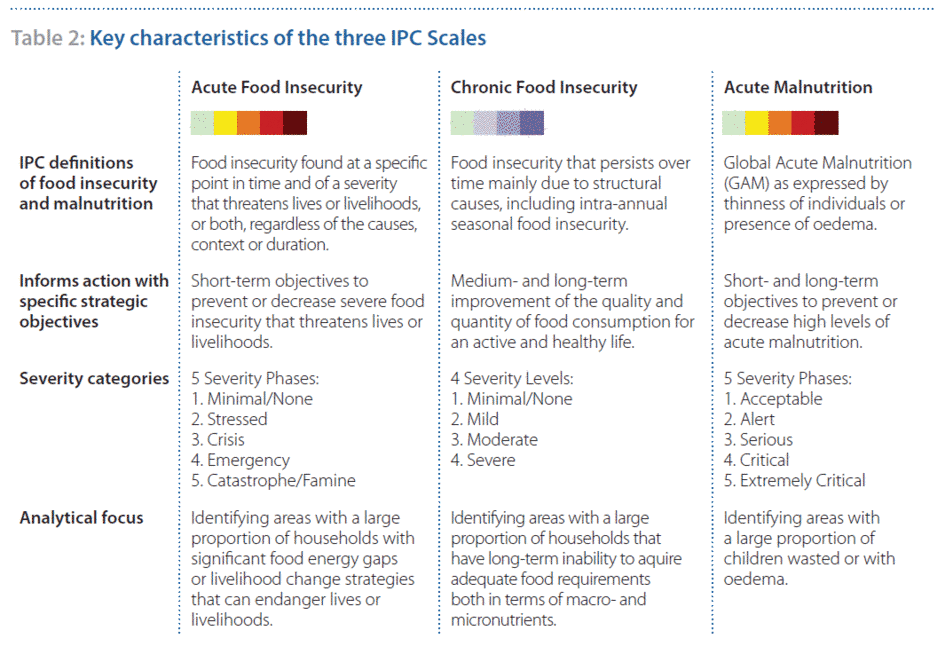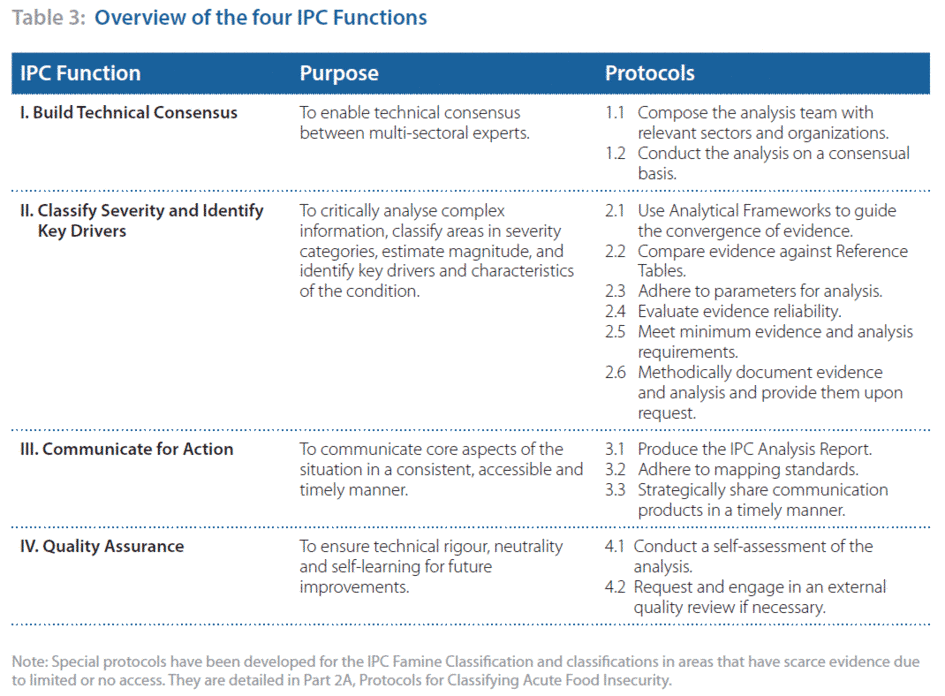1.3 How it works
The IPC makes the best use of the evidence available through a transparent, traceable and rigorous process. Evidence requirements to complete classification have been developed taking into consideration the range of circumstances in which evidence quality and quantity may be limited while ensuring adherence to minimum standards. To ensure the application of the IPC in settings where access for collecting evidence is limited or non-existent, specialized parameters have been developed. The IPC provides a structured process for making the best assessment of the situation based on what is known and shows the limitations of its classifications as part of the process.
There are three IPC scales: Acute Food Insecurity, Acute Malnutrition and Chronic Food Insecurity. Each scale classifies a specific condition that is linked to particular responses. The uses and analytical differences for each of the scales are described in Table 2.

The IPC consists of four Functions that must be followed to conclude classification and to generate IPC information products. Each function has a specific purpose and a set of protocols to guide analysts. The completion of all protocols is fundamental to the IPC as they ensure that analyses are rigorous, neutral and accountable. The four Functions are detailed in Table 3 and include:
- Function 1: Build Technical Consensus
- Function 2: Classify Severity and Identify Key Drivers
- Function 3: Communicate for Action
- Function 4: Quality Assurance
All three scales follow exactly the same protocols within functions but contain adapted tools and procedures to allow analysts to untangle the different conditions. By sharing the same protocols, the IPC promotes the application of multiple scales in the same country.
